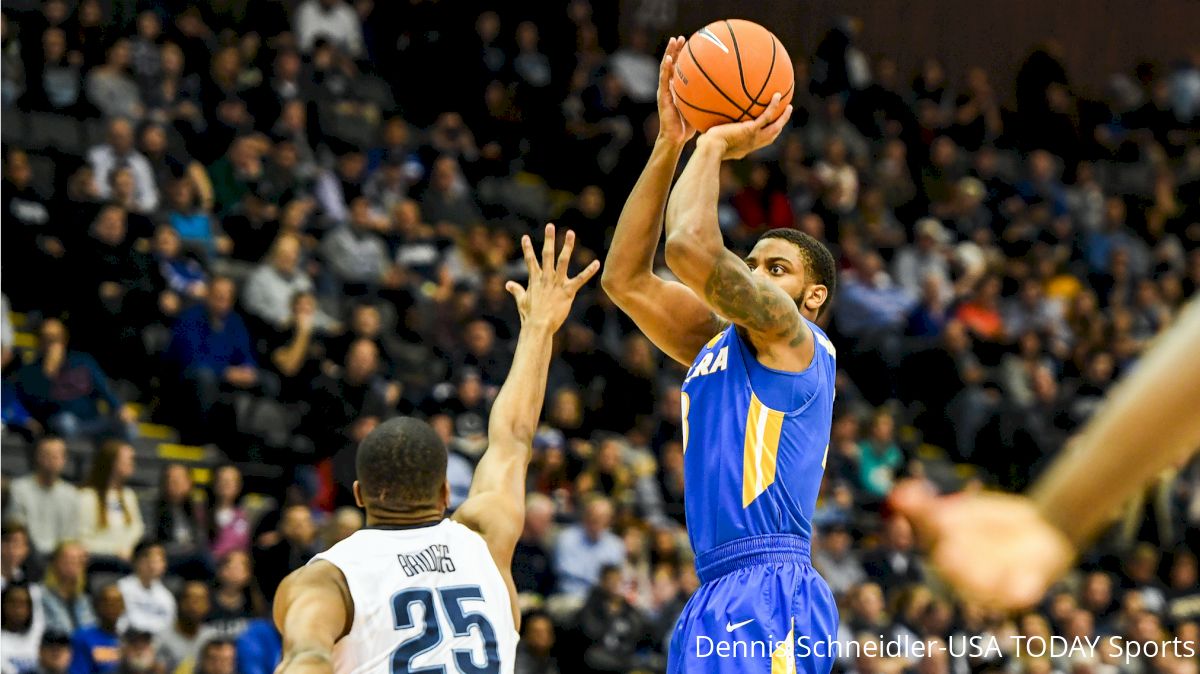Hofstra's Justin Wright-Foreman Is A Scoring Machine
Hofstra's Justin Wright-Foreman Is A Scoring Machine
Among the 2019 NBA draft class, few professional hopefuls score as effectively as Hofstra’s Justin Wright-Foreman.

Among the 2019 NBA draft class, few professional hopefuls score as effectively as Hofstra’s Justin Wright-Foreman. In fact, only Campbell’s Chris Clemons averaged more than Wright-Foreman’s 27.1 points per game last season.
Staying true to made him the second-leading scorer in Colonial Athletic Association history, and a two-time CAA Player of the Year, could be what lands Wright-Foreman on an NBA roster.
“The story is: be who you are,” said Hofstra head coach Joe Mihalich.
Mihalich knows about the transition from college to the NBA. As an assistant at LaSalle, he coached teams that prepared players for lengthy pro careers. Doug Overton and Tim Legler both spent a decade-plus in the NBA, and Lionel Simmons was headed in that direction before injuries cut his career short.
Mihalich’s also coached effective scorers – though Wright-Foreman is statistically the best since Simmons made his name as “The L-Train” en route to National Player of the Year honors in 1990. Another outstanding scorer from Mihalich’s past is Juan Mendez, a power forward on the 2005 NCAA Tournament-participating Niagara Purple Eagles.
“Juan was the baddest dude I’ve ever been around, your classic power forward,” Mihalich said of Mendez, a member of the NCAA’s exclusive 2,000-point, 1,000-rebound club. “Ten feet and in, he was just mean, and so good at finding a way to score. He was powerful, he was quick, he was crafty; just an incredible combination around the basket.
“But here’s the thing: He’s 6-foot-7,” Mihalich added. “Everybody convinced him to be in the NBA, you have to shoot 3s.”
Long-held schools of thought dictated an NBA draft’s prospects on certain elements like body type. To play in the paint effectively, you had to be 6-foot-9 or taller, otherwise you needed to be a perimeter player.
At 6-foot-2, Wright-Foreman may have been considered undersized for his natural position as a scoring combo guard in the not-so-distant past, and thus been expected to transition to a more traditional point-guard role – someone who brings the ball upcourt and sets the tables for others to do the scoring.
It’s a pitfall that someone who knows about defying conventions to make the NBA knows well: Hofstra assistant coach and seven-year pro vet, Craig “Speedy” Claxton.
“These kids will read their press clippings when people say what they need to work on,” Claxton said. “Then, they go out to these camps and they try to show they can do that and end up looking bad, instead of doing what got them to that stage.”
Claxton effectively navigated the same path Wright-Foreman currently attempts to traverse, advancing from Hofstra to the NBA. At 5-foot-11 and coming from of a program not affiliated today’s football-dictated “Power Five,” Claxton was a dark horse.
Playing his style of ball provided Claxton a lengthier pro career than many of his power-conference counterparts.
“I’d hear about them on ESPN, hear Dick Vitale talking about them,” Claxton said. “Then, once I got on the same court as them, I thought, ‘Wait. I’m not just as good as them. I’m better than them.’”
In his experience lies some of the wisdom Claxton imparted on Wright-Foreman.
“All these kids you’re used to seeing them pump up on ESPN…you’re just as good as them. You’ll quickly realize when you’re on the same stage as them, just like I did,” Claxton said.
If there’s an advantage Wright-Foreman has coming up two decades after his Hofstra mentor, it’s in the evolved basketball landscape. One need look no further than the 2019 NBA Playoffs, which feature stars from nontraditional programs – Steph Curry and Davidson, Damian Lillard and Weber State, C.J. McCollum and Lehigh, Pascal Siakam and New Mexico State – as well as a variety of explosive scoring guards who would have been deemed too small to play the 2 a generation ago.
The current pro to whom Claxton compared Wright-Foreman’s scoring style – Denver Nuggets guard and 2017 All-NBA honoree Isaiah Thomas – goes just 5-foot-9. The rise of such is owed in part to the absence of a label like 2-guard.
The phrase “positionless basketball” is invoked so often as to feel cliché. However, “I’m not sure it’s cliché, the way the game is now,” said Mihalich.
“I think you have three positions in basketball,” he said. “You have your big guy in the low post. You have your point guard. And other than that, everybody’s just got to be able to dribble and pass and shoot and use the ball screen and cut, all that stuff.”
Wright-Foreman demonstrated at Hofstra he can handle those duties, and continuously improve upon them. After putting up 24.4 points per game in 2017-18, he upped his average by almost 3 last season, and did so with a 6.2 jump in field-goal percentage. He also shot 42.5 percent from behind the 3-point line, an increase of almost 6 from his junior campaign – and an improvement of 19 percent from his freshman season.
Wright-Foreman’s career-long strides in college demonstrate his ability to adapt his game, which he’ll be expected to do in the NBA. But in the meantime, the areas in which he already excels will be what give him an opportunity at the game’s highest level.